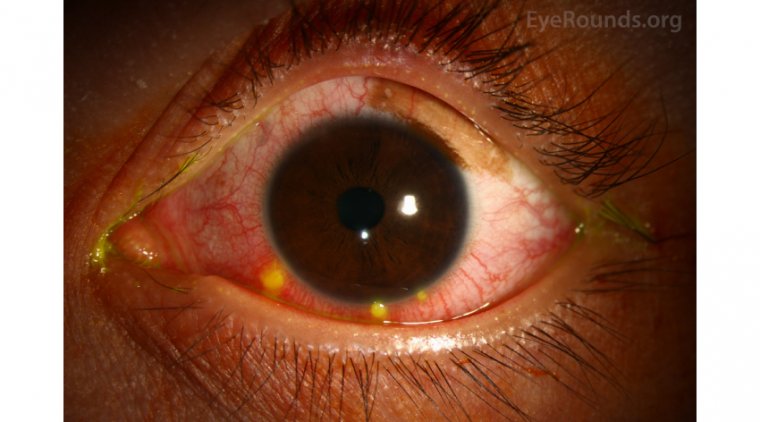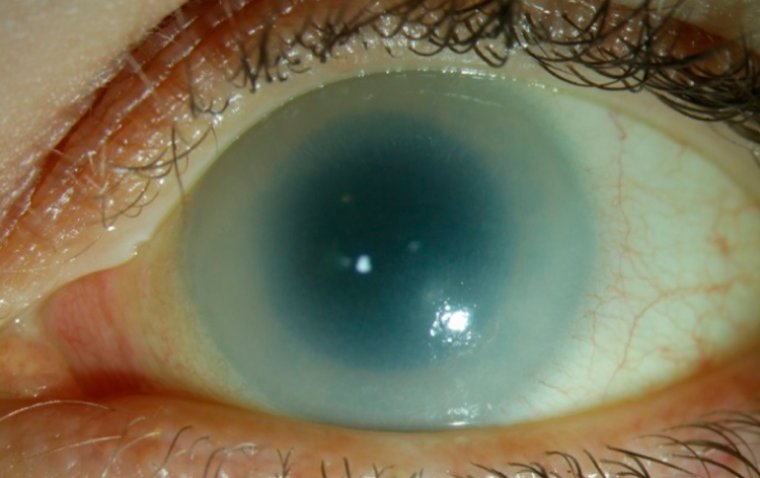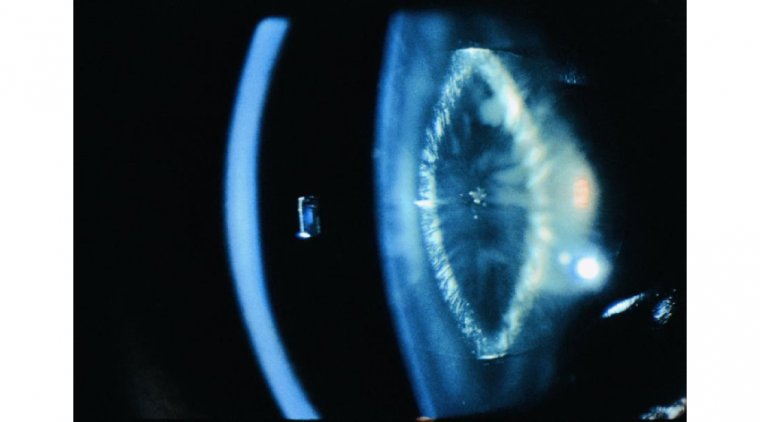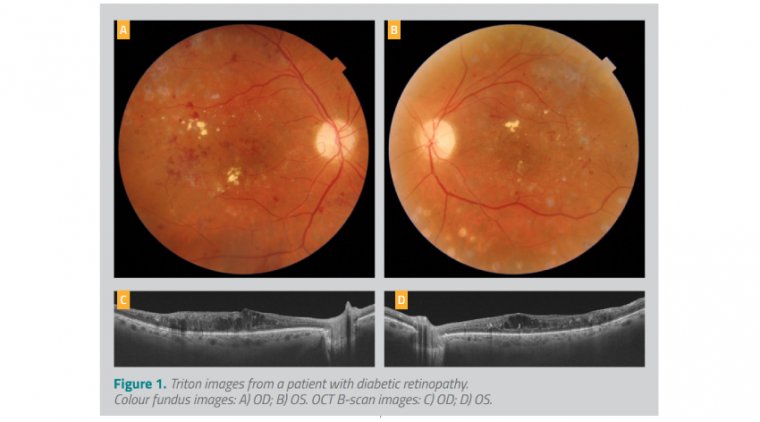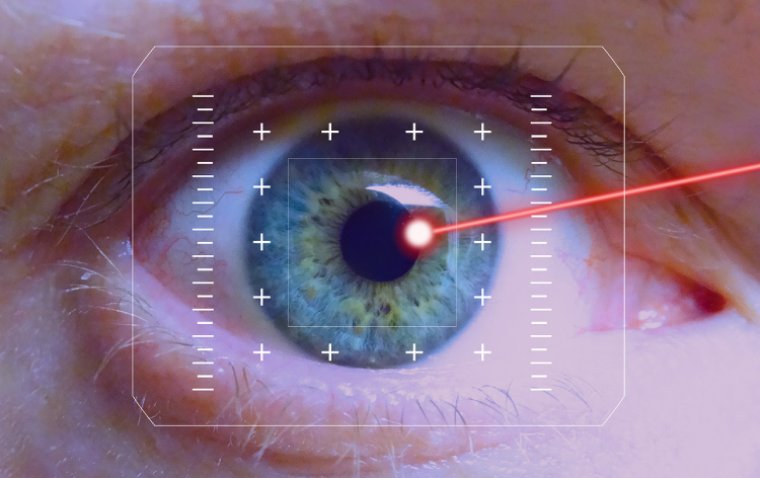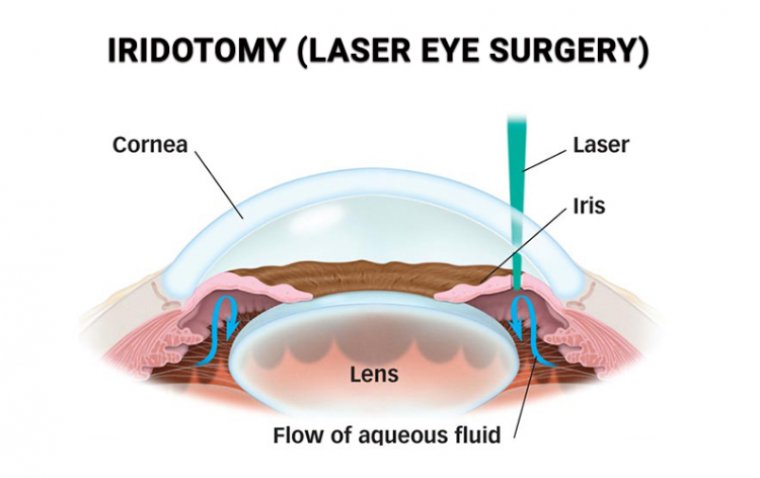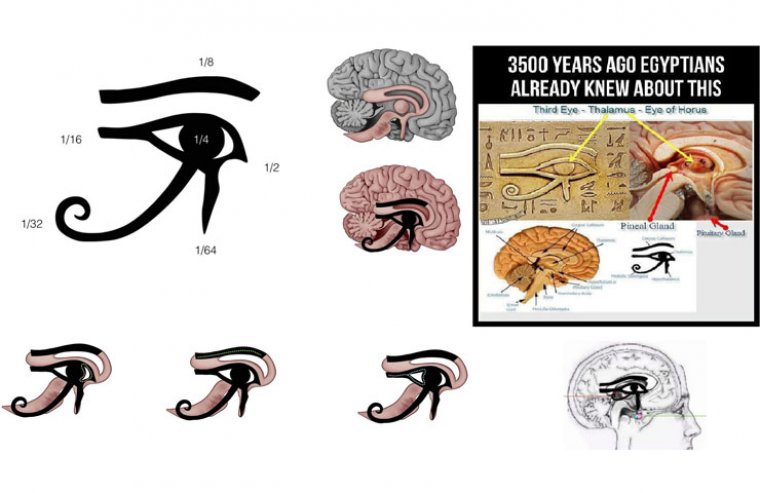
The Pineal Gland & The Eye Of Horus
Since Galen, a Greek physician and philosopher, first recorded information on the pineal gland's significance, it has been the focus of extensive research. Colleagues of Galen held the opinion that the pineal controlled the movement of "psychic pneuma," an ethereal substance known as "the first instrument of the soul." Galen, however, disagreed, contending that the pineal was only a gland that controlled blood flow.
René Descartes' study in the pineal led to a rebirth of the supernatural traits connected with it. He insisted that it was "the fundamental seat of the soul" and that it was where all thought originated. Reflex theory, or the involuntary system of acts carried out in the body's function, is mostly credited to Descartes.
In his opinion, the intellect might exist independently of the body and possess the capacity to subdue animal instincts by entering the brain through the pineal gland. Because the pineal does not have a matching pair like most other sensory organs, Descartes thought it was special.
"Impressions must logically combine in some area of the body before being processed by the soul, whether they enter by the two eyes, the two ears, etc. Since this gland is located at the most advantageous location for this function, in the midst of all the concavities, it is now hard to find any other such location in the entire head." – Réne Descartes
What is Pineal Gland?
The pineal gland is a tiny endocrine gland found in most vertebrate's brains.A small gland with the appearance of a pinecone, is located deep into the centre of the brain. Despite its diminutive size, it plays a significant role in regulating our sleep-wake cycle and overall health.

Anatomy of the Pineal Gland
Structure and Location
The pineal gland, a part of the endocrine system, is located in the brain's epithalamus region. It is about the size of a pea and resembles a pinecone. The gland is made up of pinealocytes, sometimes referred to as pineal cells, which are in charge of producing and secreting melatonin.
Connection to the Brain and Nervous System
The pineal gland is linked to the brain by the suprachiasmatic nucleus (SCN), which is located in the hypothalamus. The pineal gland produces and secretes melatonin as a result of information about the cycles of light and dark that the SCN receives from the eyes.
Function of the Pineal Gland
Regulating Circadian Rhythms and Sleep-Wake Cycles
The pineal gland's main job is to control our circadian rhythms and sleep-wake cycles. Melatonin, which promotes sleepiness, is produced and secreted by the pineal gland in response to signals from the SCN as it is dark outside. Melatonin production declines in the morning as it grows lighter, assisting us in waking up and feeling awake.
Melatonin Production
Our sleep and waking cycles are regulated by the hormone melatonin, which is produced by the pineal gland. When melatonin levels are greater in the evening, we feel sleepy; when melatonin levels are lower in the morning, we feel alert and awake.
Other Functions
Our sleep-wake cycles are primarily regulated by the pineal gland, but there is evidence that it may also affect aging, immunological function, reproductive and sexual function.
Implications for Health
Health Benefits of Maintaining a Healthy Pineal Gland
Maintaining a functioning pineal gland is essential for overall health and wellness. A healthy sleep-wake cycle and sufficient levels of melatonin have been linked to improved immune, mood, and cognitive function as well as a decreased risk of chronic diseases including diabetes and cardiovascular disease.
Risks and Concerns Related to Pineal Gland Dysfunction
Sleep problems, sadness, anxiety, and cognitive decline are just a few of the health issues that can be brought on by age-related, traumatic, or disease-related pineal gland dysfunction.
Lifestyle Factors and Pineal Gland Health
The pineal gland's health can be impacted by a variety of lifestyle factors, including diet, exercise, and sleep habits. Regular physical activity and a diet high in antioxidants maintain a healthy pineal gland. Maintaining a healthy sleep-wake cycle and melatonin levels also requires getting enough natural light during the day and limiting your exposure to artificial light at night.
Connection Between Pineal Gland and The Third Eye
Some spiritual and philosophical traditions have connected the pineal gland to the "third eye". This is due to the pineal gland's proximity to the visual cortex and its role in controlling our circadian rhythms, which are linked to light and darkness and regulate our sleep-wake cycle. Activating the pineal gland, according to some, can result in an enhanced state of consciousness and spiritual awareness.
The pineal gland is thought to play a role in psychic and spiritual experiences as well. While some scientific evidence suggests that the pineal gland may contribute to these experiences, more investigation is required to fully comprehend how it relates to other spiritual ideas.
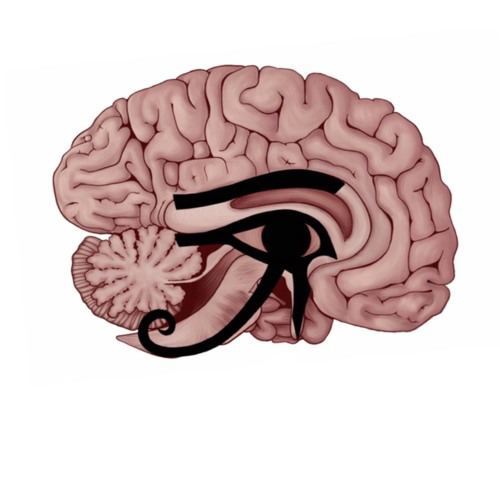
The Third Eye in Myhtology
The concept of the Third Eye is found in various mythologies and spiritual traditions around the world, including Hinduism, Buddhism, and Taoism.

Hinduism & Third Eye
Shiva and other Hindu deities are often depicted with a literal third eye on their forehead. This eye represents an awakening, or enlightenment, as the ability to see into higher realms of existence and consciousness. Many interpret this third eye as the pineal gland.
Shiva's dreaded snake-wrapped hair has a striking resemblance to the pinecone that gave rise to the gland's name. Hinduism considers snakes to be lucky, and Kundalini Yoga imagery frequently features them.
The body’s chakras are often depicted in Kundalini by a winged staff encircled by two snakes, or a Caduceus as it is known in Greek mythology. The snakes meet at the Ajna chakra, where the pineal and pituitary glands are located. This chakra is known as the source of consciousness, with Ajna translating to command or guidance.
Buddhism & Third Eye
Buddhists frequently refer to the Third Eye as the "Eye of Wisdom" or the "Divine Eye." It is thought to be a metaphorical eye that offers perception and comprehension beyond what is visible to the naked eye. It is regarded as a representation of spiritual consciousness and the capacity for clear-eyed, insightful observation of the outside world.
The idea of emptiness, which holds that everything is interconnected and dependent upon everything else and that there is no stable or independent self, is frequently associated with the Third Eye in Buddhist teachings. The Third Eye is viewed as a tool for realizing the essence of reality as it truly is and seeing through the attachments and illusions that keep us bound to misery.
Practices such as meditation and mindfulness are seen as a way to awaken and develop the Third Eye, allowing individuals to cultivate wisdom and compassion, and to see the world with greater clarity and insight. In this way, the Third Eye is a symbol of spiritual development and enlightenment in Buddhist philosophy.
Taoism & Third Eye
In Taoism, the Third Eye is often associated with the concept of internal energy, or "qi." It is believed to be located in the "upper dantian," a point between the eyebrows, and is considered to be a source of spiritual insight and intuition.
The activation and cultivation of the Third Eye is a central practice in Taoist meditation and energy work. Taoist practitioners believe that by focusing their attention on the Third Eye and cultivating internal energy, they can enhance their intuition and spiritual vision, and gain a deeper understanding of the world around them.
The idea of the "microcosmic orbit," a meditation technique that includes moving energy throughout the body, is also connected to the Third Eye. Taoist practitioners seek to awaken their spiritual vision and obtain understanding of the nature of reality by concentrating on the Third Eye and moving energy throughout the body.
In Taoism, the development of inner vitality, spiritual understanding, and intuition are all linked to the Third Eye. Practitioners work to open and expand their Third Eye through meditation and energy work, which enables them to see beyond the physical realm and develop a greater awareness of the spiritual basis of existence.
Ancient Egypt & Third Eye
The concept of the Third Eye is not explicitly found in ancient Egyptian mythology or religion. However, there are some similarities between the idea of the Third Eye and the Eye of Horus, an important symbol in ancient Egyptian religion and mythology.
The Eye of Horus was a symbol of protection, power, and good health. It was often depicted as a stylized eye, with various elements representing different parts of the eye and its functions. The eye was associated with the god Horus, who was considered to be the god of the sky, war, and protection.
Anatomically, each part corresponds with the center of a particular human sensorium. For many years, the Eye of Horus was considered as a symbol of prosperity and protection by the ancient Egyptians, and its legacy continued into modern Egypt as well.
Some scholars believe that the Eye of Horus may have been associated with a form of spiritual vision or insight. The eye was seen as a symbol of the sun, and was associated with light and illumination. It was also associated with the goddess Wadjet, who was considered to be the protector of the pharaoh and the symbol of divine authority.
While the concept of the Third Eye as it is understood in modern spirituality is not found in ancient Egyptian mythology, the Eye of Horus shares some similarities with the idea of spiritual vision and insight. The eye was seen as a symbol of power and protection, and was associated with the ability to see beyond the physical world.
Connection Between The Third Eye and Eye of Horus
The Eye of Horus and the Third Eye are not the same thing, although they are sometimes associated with similar spiritual and metaphysical concepts. The Eye of Horus is an ancient Egyptian symbol that represents protection, power, and good health, and was often used in religious rituals and art. It is depicted as a stylized eye, with various elements representing different parts of the eye and its functions.
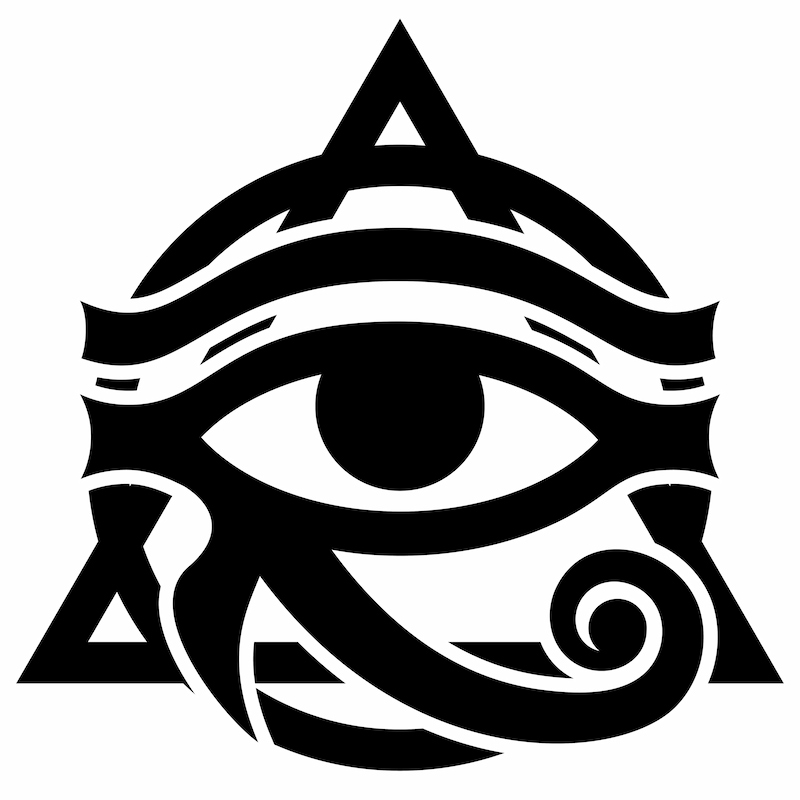
On the other hand, the Third Eye is a spiritual concept that is often associated with the pineal gland in modern Western spirituality and New Age beliefs. It is believed to be a metaphorical "eye" that provides spiritual vision and insight, allowing individuals to see beyond the physical world and into the realm of the spiritual. While the Third Eye is not a physical structure in the body, some believe that the pineal gland may play a role in spiritual experiences and consciousness.
So, in summary, the Eye of Horus and the Third Eye are not the same thing, but both are associated with spiritual and metaphysical concepts in different cultural contexts.
The Eye of Horus in Mythology
The Eye of Horus, sometimes referred to as the Wadjet or Udjat eye in Egyptian mythology, is a potent image linked to the god Horus, who was the deity of the sky, battle, and protection. The Eye of Horus was thought to stand for power, protection, and healing.
The Eye of Horus was frequently shown as a stylised eye, with different pieces standing in for various eye parts and functions. For instance, the iris represented the sun's disk, the brow signified thought, and the teardrop symbolized healing. The falcon, which was considered to be Horus' sacred animal, was frequently represented as having markings on its eye.
The Eye of Horus mythology begins with the story of Osiris. This story is the most recognized mythology in ancient Egypt. It illustrates the eternal fight between the virtuous, the sinful, and the punishment.
According to myth, the Eye of Horus was originally damaged in a battle with the god Set, who was Horus' uncle and rival. After the eye was restored by the goddess Hathor, it became a symbol of healing and protection. The Eye of Horus was often used as a protective amulet, and was believed to have the power to ward off evil spirits and protect the wearer from harm.
The ancient Egyptians used this legendary fight as a metaphor of the battle between good and evil, order and chaos. Afterward, Horus was idolized by the ancient Egyptians in the form of the Eye of Horus, which was considered as a symbol of prosperity and protection.
In addition to its protective powers, the Eye of Horus was also associated with royal power and authority. The pharaoh was often referred to as the "living Horus," and the Eye of Horus was a symbol of the pharaoh's divine right to rule. It was often depicted on the pharaoh's crown or headdress, and was a prominent feature in Egyptian art and iconography.
Overall, the Eye of Horus is a powerful symbol in Egyptian mythology, representing healing, protection, and royal power. It continues to be a popular symbol in modern culture and is often used in jewelry and other decorative items.
Ancient Egyptians were pioneers in art and medicine. This is exemplified in the artistic measurements of the Eye of Horus. The Eye of Horus was divided into six different parts called the Heqat fractions, in which each part was considered a symbol itself.
The Eye of Horus fragments were organized together to form the whole Eye, similar to the myth, and these fragments were given a series of numerical values with a numerator of one and dominators to the powers of two: 1/2, 1/4, 1/8, 1/16, 1/32, and 1/64. Some historians suggested that each part of the eye represents one of the six senses: smell, sight, thought, hearing, taste, and touch.
Eye of Horus and Medicine – Neuroanatomy
The Eye of Horus has been used for many metaphors over the years, i.e., “Eye of the Mind, Third Eye, Eye of the Truth or Insight, the Eye of God Inside the Human Mind.”
The ancient Egyptians, because of their beliefs in the Eye of Horus’ mystic powers, gave all of these names to the Eye of Horus.
Smell: 1/2
To show the significance of the Eye of Horus in human neuroanatomy, we go beyond the visual world and explore the hidden mysteries of the human senses, starting with the sense of smell.
On the Eye of Horus, the smell is represented by the triangular shaped object on the right side of the Eye’s pupil, illustrated by the yellow triangle.
On a closer look, this triangular-shaped object was designed in a way to resemble the side view of the human nose as a symbol of smell and was given the 1/2 Heqat fraction. The 1/2 Heqat fraction is also in the identical location and shape of the olfactory trigone.
Vision: 1/4
The human perceives vision when the light hits the retina inside the globe, sending neuronal electrical impulses through the optic pathways to the interthalamic adhesion (massa intermedia) where some of the thalamic fibers that carry the vision, along with other sensations, move towards the midline and then curve laterally to the same thalamus.
The impulses are sent from the thalamus to the optic radiation tracts and then to the visual cortex in the occipital lobes. On the Eye of Horus, the pupil of the Eye represents the sight or vision sensation and was given the 1/4 Heqat fraction.
The 1/4 Heqat fraction is also in the identical location and shape of the massa intermedia (interthalamic adhesion).
Wisdom: 1/8
One of the metaphoric names of the Eye of Horus is the Eye of the Mind, which was named after its reputation as the symbol of wisdom or thought.
Wisdom is represented by the eyebrow of the Eye and given the 1/8 Heqat fraction. The eyebrow is often associated with thinking; for example, we move our eyebrows to express various emotions.
From the anatomical perspective, it resembles the corpus callosum. The corpus callosum is the largest collection of the white matter fibers within the brain and facilitates the rapid transmission of neuronal impulses between both hemispheres.
On the Eye of Horus, the eyebrow represents wisdom and was given the 1/8 Heqat fraction. The 1/8 Heqat fraction exactly resembles the location and shape of the corpus callosum.
Hearing: 1/16
On the Eye of Horus, hearing is represented by the triangular-shaped object and the lateral commissure (canthus) on the left side of the Eye’s pupil. The 1/16 Heqat fraction is aligned to the same location.
Taste: 1/32
The taste sensation is carried to the thalamus, then to the primary gustatory area of the cerebral cortex for interpretation.
On the Eye of Horus, taste is represented by the curved tail and was given the 1/32 Heqat fraction. The 1/32 Heqat fraction of the Eye resembles the taste pathway in the human brain. We think that ancient Egyptians used this fraction as a part of their mystic arts.
Touch: 1/64
Touch sensation is carried by the somatosensory pathway, which carries numerous sensations from the body, i.e., light touch, pain, pressure, temperature, joint and muscle position sense (proprioception).
These sensations are divided into three groups, and each group is carried by a different pathway in the spinal cord with a different target in the brain cortex. The first group includes touch, pressure, and vibration perception and allows us to define the shapes and textures of the objects without sight.
These senses are carried by the posterior column-medial lemniscus pathway of the spinal cord. The second group includes pain and temperature senses that are carried by the lateral spinothalamic tract.
The third group includes proprioception, which allows us to sense the relative position of body parts and the strength needed for movement. On the Eye of Horus, the touch sensation is represented by the straight object coming down from the right side of the Eye, and was given the 1/64 Heqat fraction. The 1/64 Heqat fraction of the Eye resembles the somatosensory pathway.
Although we recognize the liabilities of overinterpreting a symbolic masterpiece like the Eye of Horus, we propose that the anatomical metaphors in the Eye of Horus are not by coincidence and merit discussion.
The ancient Egyptians were leaders in medicine and anatomy. This can be found in documented papyrus, as well as the walls of many temples and tombs.
In the creation of Eye of Horus, ancient Egyptians combined their artistic abilities and knowledge of anatomy with their deep belief in mythology.
More importantly, we argue that there is a clear influence of their interpretation of human senses on the size and shape of the Eye. This is an amazing feat considering the unavailability of radiographic and computational technology in that era.
The significance of our theory of the Eye of Horus is not to be used as an anatomical gold standard but rather to acknowledge and appreciate the genius and foresight of an ancient civilization in decoding the intricate functions of the human central nervous system.
Conclusion
Although the pineal gland and the Eye of Horus are both linked to the idea of the third eye and spiritual enlightenment, mythology and science do not directly link them. In Egyptian mythology, the Eye of Horus is a representation of defense, healing, and regal authority, whereas the pineal gland is a tiny endocrine gland in the brain that generates melatonin and controls circadian cycles. But there are many different cultures and spiritual traditions that use the third eye and spiritual awareness as symbols, indicating a universal human desire for more knowledge and understanding.
(1).jpg)

